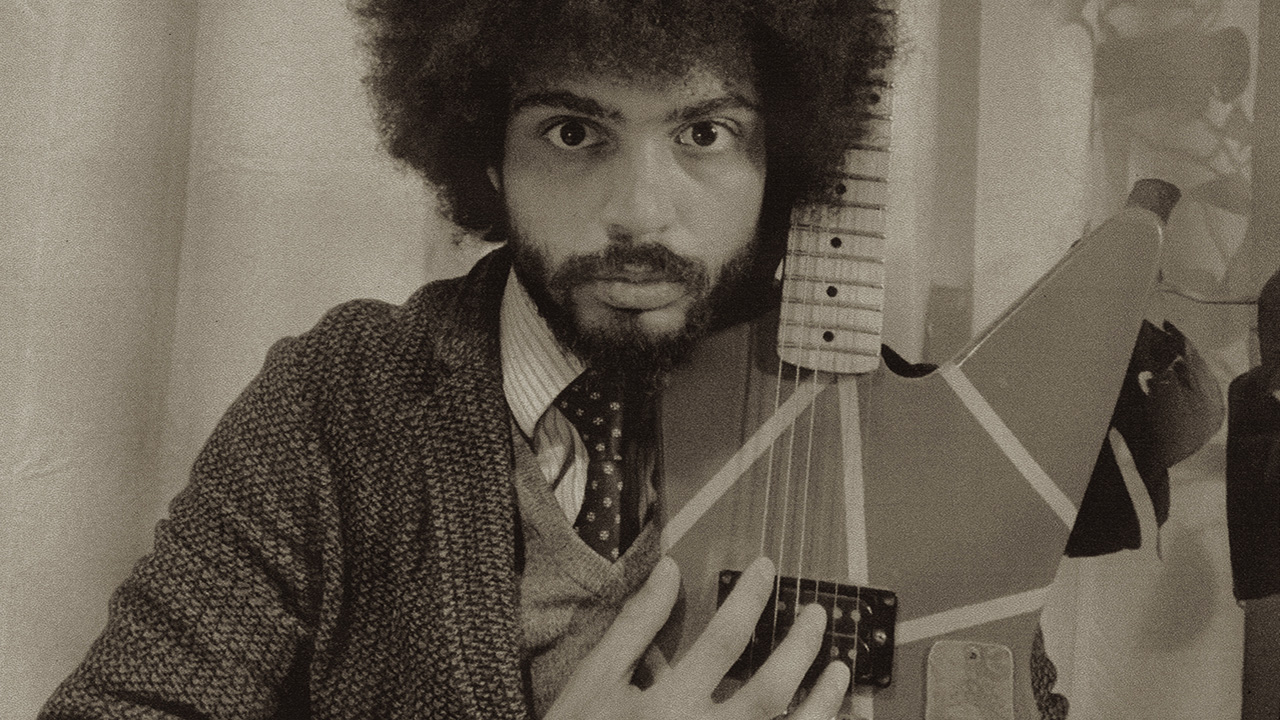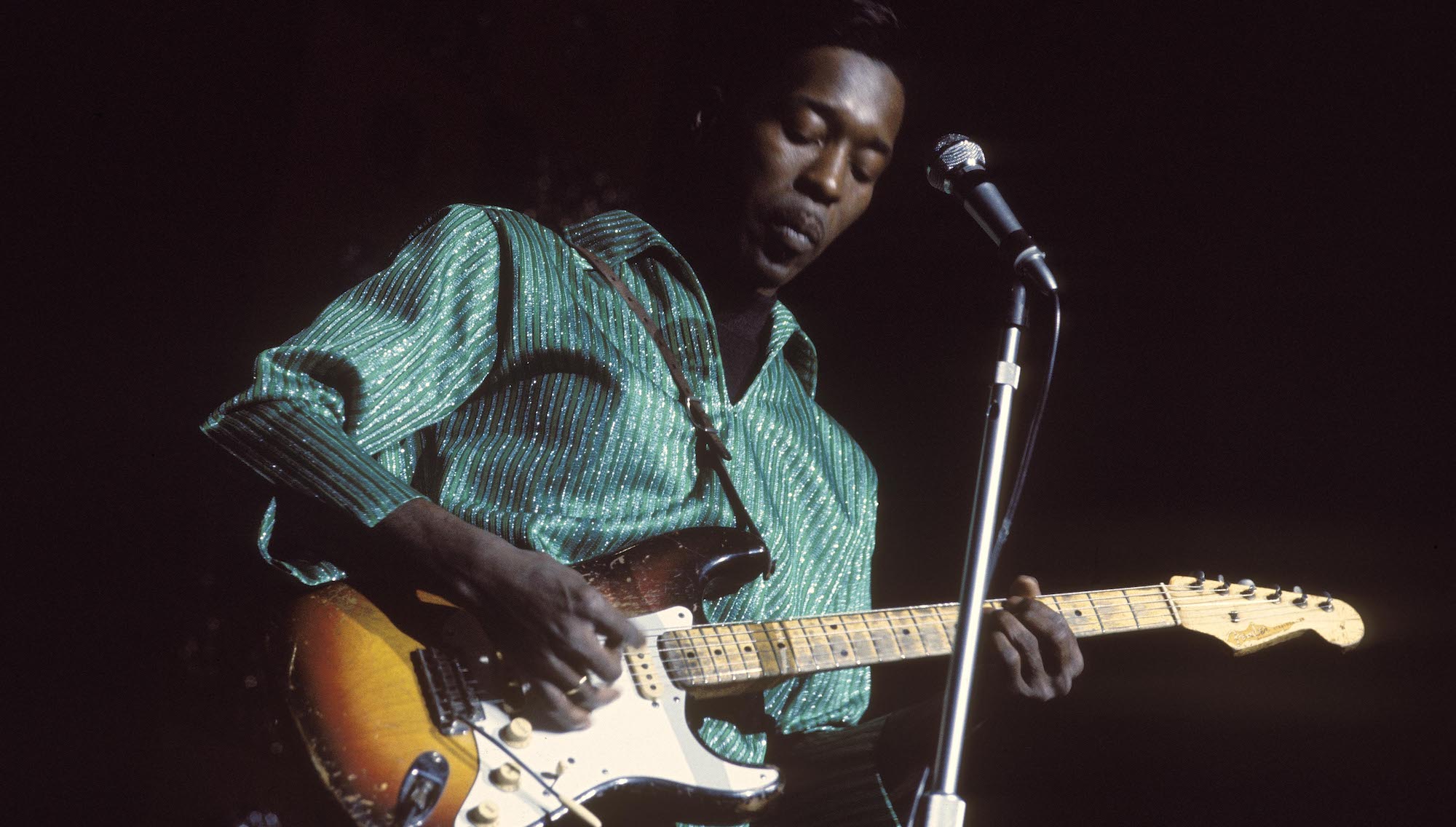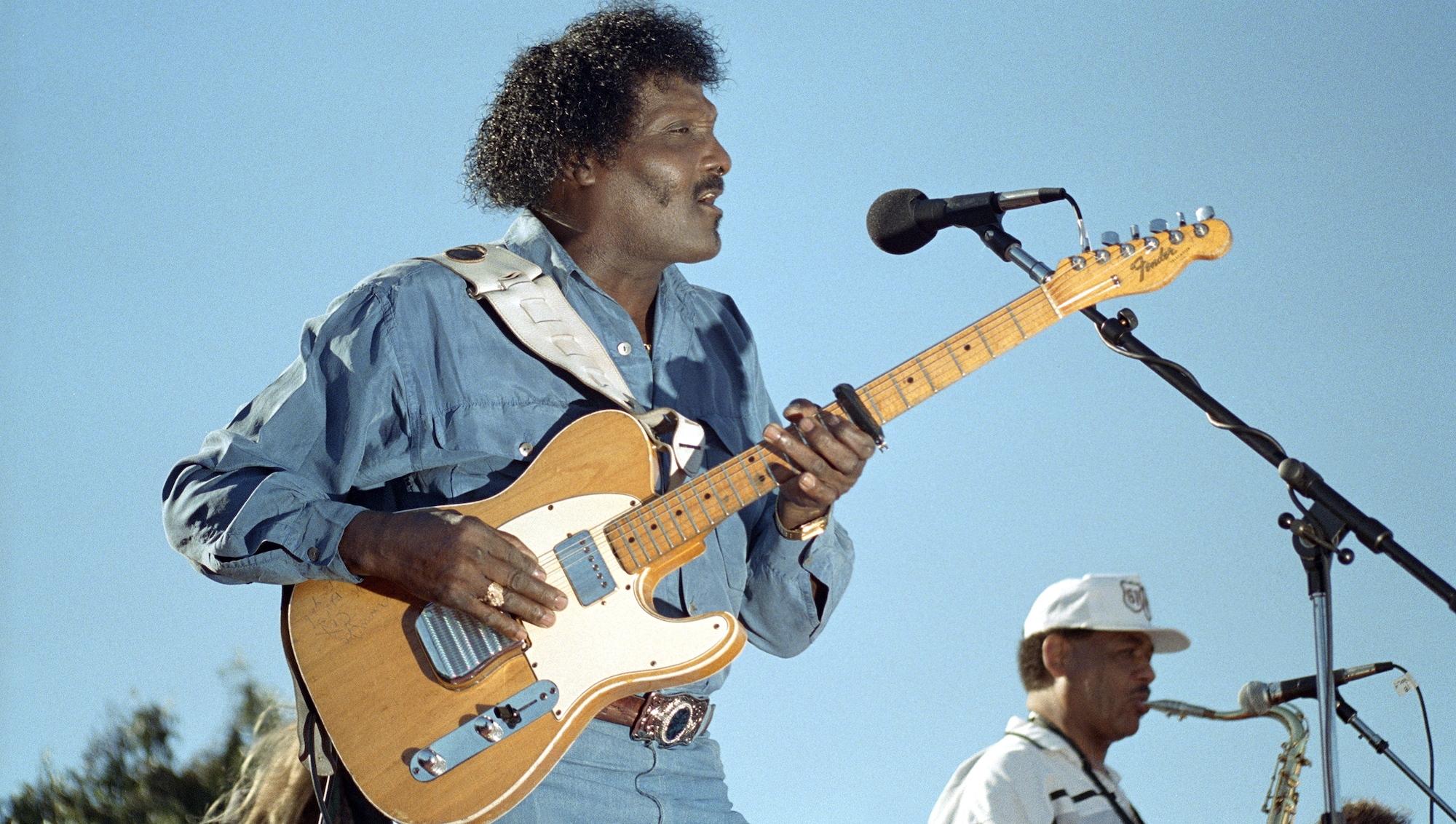“You have to fight to be heard in metal. But you have to give them something worth fighting for!” 20 metal bassists who took heavy bass playing in new directions
Featuring metal’s leading low-enders – from old-school thrash to modern metal

Playing bass guitar in a metal band is easy. You carefully copy whatever riff the guitarist plays, wave horn signs at the leather-clad crowd and then go home. There's little room for improvisation and no need for you to leave the bottom string, unless you feel like showing off. Those are the clichés, anyway.
“If you are going to have bass, let's hear it,” metal session ace Steve DiGorgio told Bass Player. “Let's make it just as important as the other instruments in the band. Sometimes you have to fight to be heard in metal. But you have to give them something worth fighting for! We've really got to create the new standard.”
The truth is that playing in a metal outfit takes talent, precision, technique and subtlety. While it's true that metal is founded on guitar riffs, and riffs are made heavier when they're underpinned by a bassline playing the same notes, that's not the end of the story.
For examples of some of the fieriest fills and ‘outside-the-riff’ bass playing anywhere, listen to Iron Maiden's Steve Harris, Black Sabbath's Geezer Butler and the late Metallica bassist Cliff Burton, a classically-trained pianist whose playing incorporated both Bach and punk-rock influences.
“Somehow, Cliff would have the freedom to express the instrument and give it a personality that it did not have before in metal,” said Robert Trujillo, Metallica’s bass player since 2003. “He took that attitude that the fusion players had, and he brought it in – and especially in thrash metal, that was pretty impressive.”
There are scores of metal bass players out there, but who are the truly great ones? Here’s a look at those who have crushed the genre’s boundaries.
1. Lemmy – Motörhead
Lemmy – said to be so nicknamed because of his habit of borrowing cash from his bandmates – began his career with the Rockin’ Vickers before becoming a roadie for Jimi Hendrix, but his career really took off when he joined Hawkwind in 1970.
Get The Pick Newsletter
All the latest guitar news, interviews, lessons, reviews, deals and more, direct to your inbox!
Fired after being detained for drugs, Lemmy formed Motörhead. His famously filthy bass tone isn’t for everyone, but for millions of Motörhead acolytes, it’s nothing less than the sweetest sound ever committed to vinyl.
2. Cliff Burton – Metallica
On the extreme metal scene of the early 1980s, bass players were expected to stick to precise root notes, or at most to copy the guitar riff. The late Cliff Burton blew all that out of the water.
If you're sceptical about old-school Metallica fans’ constant proclamations that Burton made the San Fran thrashers the band they are today, look no further than Orion from their finest hour, Master Of Puppets.
3. David Ellefson – Megadeth
David Ellefson deserves your praise not only for giving us the most recognised bass riff in thrash – the intro of 1987's Peace Sells (But Who's Buying?) – but also for putting up with the 'Deth's permanently peeved frontman Dave Mustaine for more than 15 years.
Ellefson brought a punchy tone and ridiculous picking hand precision to the Megadeth sound. Rock-solid, inventive and economical, Dave Jr. (as he was inevitably labelled) is something of an unsung genius.
4. Steve Harris – Iron Maiden
Iron Maiden are a global institution, and their bassist extraordinaire Steve Harris is probably the best-known heavy metal bass player in the world. His fingerstyle playing is unorthodox, he told us, because he relies on the fingernails on his plucking fingers to deliver his famous, trebly tone.
Maiden spearheaded a metallic invasion of America in the early ‘80s, and only one band – Metallica – can claim to approach them in total album sales.
5. Geezer Butler – Black Sabbath
A founder member of the first ever heavy metal band, Terence ‘Geezer' Butler formed a rock-solid foundation with guitarist Tony lommi and drummer Bill Ward that has influenced countless acts ever since.
In between stints with Sabbath, he recorded and toured with Heaven and Hell, the post-Sabbath band featuring Ronnie James Dio on vocals, recorded three solo albums and guested with Sabbath singer Ozzy Osbourne.
Butler achieved his trademark bass tone by blasting his Fender Precision Bass through a blown guitar cabinet: “Every producer we played to said, ‘You can't have that sound – it's a bass, not a bloody guitar!’”
6. Justin Chancellor – Tool
With their uncompromising blend of distorted guitar riffs, formidable time signatures and brain-melting basslines, Tool are a band quite unlike any other.
In the specific case of bassist Justin Chancellor, his bass grooves sit beautifully against the often complex music, helped by an array of tone-boosting hardware.
The lead single from 2001’s Lateralus, Schism features a quintessentially Tool-esque bass riff that’s awash with odd time signatures. In fact, Chancellor’s treble-heavy bass pattern switches time signatures every bar!
7. Tim Commerford – Rage Against The Machine
Rage Against the Machine first began turning heads on the Los Angeles music scene in the early ’90s and were signed to Epic Records in 1992. Seemingly overnight, Tim Commerford established himself as one of the most unique bass players in metal, inspiring legions of fans in the process.
RATM’s finest hour was probably their explosive debut single, Killing in the Name. It’s a groundbreaking mashup of hip-hop, metal, and rock, with Commerford exploiting the wide frequency range of his Music Man StingRay.
8. Robert Trujillo – Metallica

Robert Trujillo deserves all of our praise. First, he’s been in the world’s biggest metal band since 2003, making him their longest-serving bassist. Second, he’s an absolute monster bass player, powering through funk, rock and metal styles with ease.
Third, he produced a documentary, Jaco, in 2012, telling the tragic story of Jaco Pastorius. Finally, he bought Jaco’s famous ‘Bass Of Doom’ and restored it to the Pastorius family. Hats off to him.
9. Frank Bello – Anthrax
Thrash metal is not known for its bass players. There are too many guitar riffs for a start, making the musical environment a difficult one. But then there's Frank Bello, the most notable exception, whipping out super-melodic fills with amazing fingerstyle precision – and headbanging like a demon at the same time.
He was also blessed with a trebly sound that should have sounded wrong (but didn't) and a to-die-for solo bass intro on the classic Caught In a Mosh.
10. John Myung – Dream Theater
When you reach the level of dexterity that John Myung has attained, there's not a lot of difference between one light-speed riff and another.
However, we'll call out The Test That Stumped Them All, largely because it shows Myung keeping up with shred-heavy guitarist John Petrucci with enviable coolness. The intro alone is enough to keep most of us practicing for at least a decade.
11. Jason Newsted – Metallica
Stepping into the shoes of the departed Cliff Burton would be an intimidating task for anyone, but when Metallica recruited Jason Newsted two months after Burton's death, he wisely opted against trying to emulate his predecessor.
Although their alternative-rock approach in the 1990s shackled Newsted's talents, he still found his niche: revisit the superb Garage Days EP for a jaw-dropping display of proficiency, and the bass intro he recorded for My Friend of Misery on the huge-selling Metallica three years later.
12. Paulo Junior – Sepultura
Paulo Junior is a powerful bass player – after all, keeping up with the viciously speedy riffing of Brazilian thrash/death metallers Sepultura was no mean feat back in the 1980s.
When Stronger Than Hate, a fearsomely aggressive moshpit anthem, ends abruptly at 05:34, he cuts in with a double-tapped bass solo. OK, there's a touch of nasty '80s-style chorus on there, but we can forgive him that.
13. Adam 'Nolly' Getgood – Periphery
Guitarist, bassist and revered producer, Adam ‘Nolly’ Getgood is one of those magnificently talented individuals who excels at everything he’s obsessed with.
During his time with Periphery, Nolly became a total game changer for bass players everywhere, constantly expanding the limits of the bass guitar in progressive metal. Known for his technical prowess, his heightened knowledge of production and studio techniques also helped make the band’s explosive sound a cohesive one.
14. Shavo Odadjian – System Of A Down
With the release of their self-titled debut album in 1998, System of a Down were simultaneously more progressive, and more head-scratchingly unlike any of their contemporaries, quickly pulling in several nations worth of fans.
Alongside frontman Serj Tankian, guitarist Daron Malakian and drummer John Dolmayan, bassist Shavo Odadjian presented the metal-consuming public with music that refused to be pigeonholed: while full-fat riffs were the cornerstone, Odadjian also deployed jazz, prog and straight-ahead anthemic rock elements that no one really understood, but which sounded pretty epic.
15. Liam Wilson – The Dillinger Escape Plan
Almost all metal bands say they hate being boxed into a genre, but the Dillinger Escape Plan really mean it. The band can flip from death metal blasts and hyper-technical math metal to spaghetti-western melodic rock, all inside a minute. With such a schizophrenic style, it's a good thing they were able to tap bassist Liam Wilson's modest attitude and exceptional ability.
Using an old Spector for recording and a G&L L-2000 live, Wilson's grind comes from a SansAmp Bass Driver, with occasional use of the Aguilar Tone Hammer and an Electro-Harmonix Big Muff to cut through.
16. Ryan Martinie – Mudvayne
Ryan Martinie’s unique style separates him from the rest of the ‘nu-metal’ pack. On Mudvayne's gold-selling 2000 debut, L.D. 50, he punctuated death-metal screams, polyrhythmic stop-and-start grooves, and odd-time chainsaw riffs with percussive slaps and taps, ringing double-stops, and melodic arpeggios.
His tone, a warm fundamental with a bright, bouncy steel chime, is generated simply, on a Warwick with everything wide open through an Avalon D.I.
17. Rex Brown – Pantera
Rex Brown was an integral part of stadium-metallers Pantera for the Texan group’s entire career. Unlike most bass players outside the thrash metal scene, Brown was required to hone a precision-engineered picking technique.
This was largely thanks to the superhuman downstrokes of his late colleague Dimebag Darrell: the two produced an incredibly synchronised riffing style on any number of Pantera classics, from Walk to A New Level and beyond.
18. Alex Webster – Cannibal Corpse
With their brutal riffing and horror-movie lyrics, Cannibal Corpse’s extreme power and speed demands ridiculous stamina and precision: fortunately for them, bassist Alex Webster is among the best players of the metal genre.
Webster’s galloping three-finger technique unlocks speed and accuracy that other bassists can only dream of; remarkably, he achieves great attack and clarity without the need for a pick.
19. John Campbell – Lamb of God
“I like to think I'm out there kicking the shit out of the audience. I want people to be psychologically pummelled by the music, by the sweat, by the smell.” So says John Campbell, bassist for Lamb of God.
A pick-style player who leans “heavily on the guitar side of the bass guitar,” Campbell gets his tone by cranking his ESP signature bass through a Tech 21 SansAmp Bass Driver for dirt, employing a Mesa Boogie 400+ head and Mesa Powerhouse cabs.
20. Alex 'V-Man' Venturella – Slipknot
In 2010, Slipknot were rocked by tragedy when their bassist Paul Gray, one of their founder members, succumbed to a heroin overdose. Enter Alex 'V-Man' Venturella, who was recruited into the band in 2014.
If you thought playing fiendishly twisty pick lines in front of stadiums packed with shrieking crowds was tough, try doing it wearing a mask that barely reveals your eyes. Somehow, V-Man manages to deliver the goods on his Status Graphite bass, night after night.

Nick Wells was the Editor of Bass Guitar magazine from 2009 to 2011, before making strides into the world of Artist Relations with Sheldon Dingwall and Dingwall Guitars. He's also the producer of bass-centric documentaries, Walking the Changes and Beneath the Bassline, as well as Production Manager and Artist Liaison for ScottsBassLessons. In his free time, you'll find him jumping around his bedroom to Kool & The Gang while hammering the life out of his P-Bass.
You must confirm your public display name before commenting
Please logout and then login again, you will then be prompted to enter your display name.
“When I first heard his voice in my headphones, there was that moment of, ‘My God! I’m recording with David Bowie!’” Bassist Tim Lefebvre on the making of David Bowie's Lazarus
“One of the guys said, ‘Joni, there’s this weird bass player in Florida, you’d probably like him’”: How Joni Mitchell formed an unlikely partnership with Jaco Pastorius





















![[from left] George Harrison with his Gretsch Country Gentleman, Norman Harris of Norman's Rare Guitars holds a gold-top Les Paul, John Fogerty with his legendary 1969 Rickenbacker](https://cdn.mos.cms.futurecdn.net/TuH3nuhn9etqjdn5sy4ntW.jpg)





